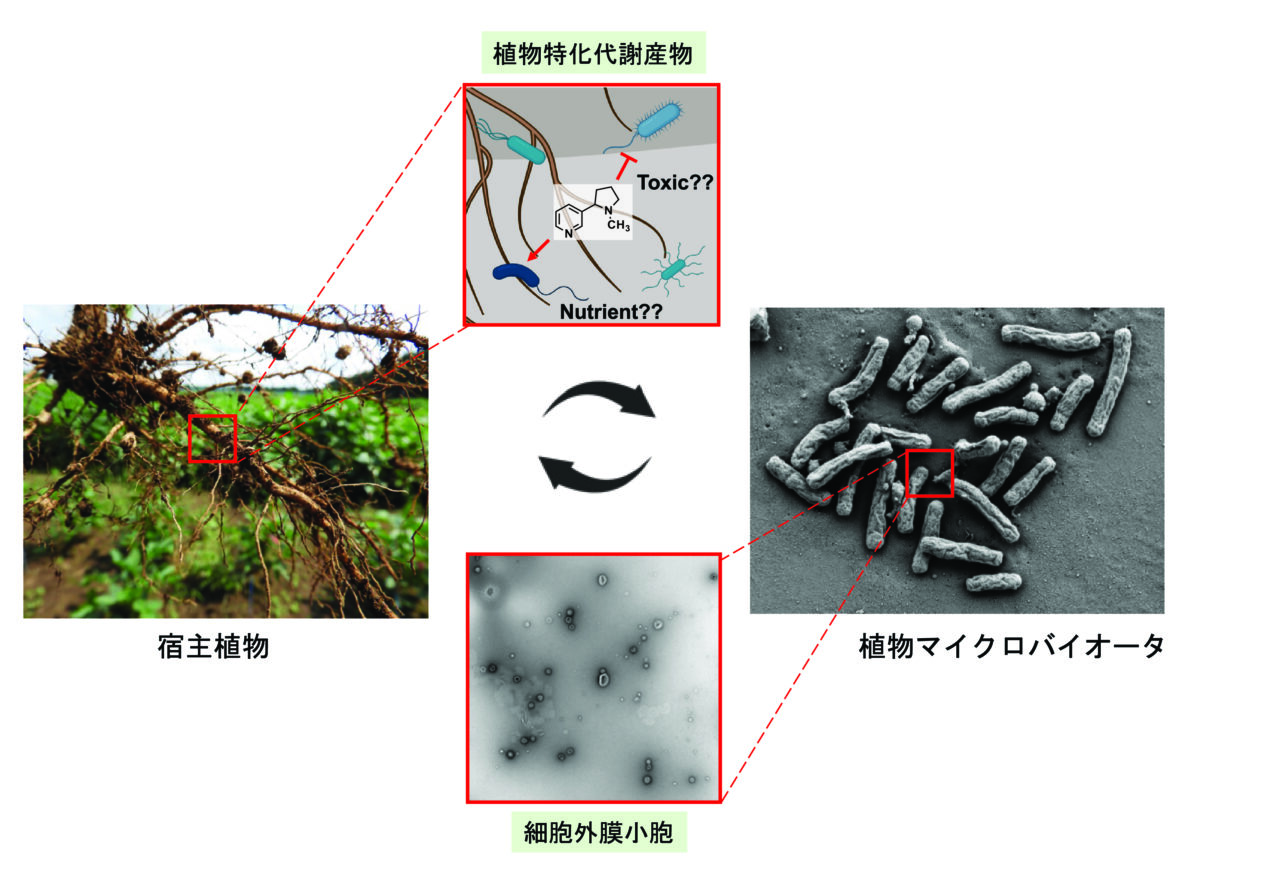SHIMASAKI, TomohisaAssistant Professor
Plants adapt to various environments through interactions with plant microbiota, which are formed inside and outside of plant tissues. My fundamental research motivation is to understand the molecular mechanism by which plant microbiota are formed and exhibits thier functions. Recently, I have been particularly interested in the functions of extracellular vesicles secreted by bacteria. Extracellular vesicles contain variety of biomolecules such as nucleic acids, proteins, chemical substances inside and its surface, and are thought to mediate biological interactions as “carriers” for these diverse biomolecules. I would like to elucidate the molecular mechanism of how these plants and plant microbiota communicate through the extracellular molecules.
 Figure 1. Our research focuses on specialized metabolites such as nicotine secreted from tobacco roots of plants and extracellular vesicles released by bacteria.
Figure 1. Our research focuses on specialized metabolites such as nicotine secreted from tobacco roots of plants and extracellular vesicles released by bacteria.
 Figure 2. Electron micrograph of bacteria strain isolated from Arabidopsis roots. The cell surface is covered with a large number of extracellular vesicles.
Figure 2. Electron micrograph of bacteria strain isolated from Arabidopsis roots. The cell surface is covered with a large number of extracellular vesicles.
References
Tobacco root endophytic Arthrobacter harbors genomic features enabling the catabolism of host-specific plant specialized metabolites. Shimasaki, T., Masuda, S., Garrido-Oter, R., Kawasaki, T, Aoki, Y., Shibata A., Suda, W., Shirasu K., Yazaki K., Nakano, R. and Sugiyama, A. mBio, e0084621 (2021). DOI: 10.1128/mBio.00846-21
Nitrogen deficiency-induced bacterial community shifts in soybean roots. Yazaki, W*., Shimasaki, T*., Aoki, Y., Masuda, S., Shibata A., Suda, W., Shirasu K., Yazaki K. and Sugiyama, A. Microbes and Environments, accepted (2021). DOI: 10.1264/jsme2.ME21004
X-ray structures of fructosyl peptide oxidases revealing residues responsible for gating oxygen access in the oxidative half reaction. Shimsaki, T*., Yoshida, H*., Kamitori, S. and Sode, K. Scientific Reports, 7, 2790 (2017). DOI: 10.1038/s41598-017-02657-5
Faculty
Faculty of Science
Department of Biological Sciences
Cell Structure and Function
Grad School
Graduate School of Life Science
Division of Life Science
Biosystems Science Course
Contact Information
Faculty of Science, Building #5 5-706
